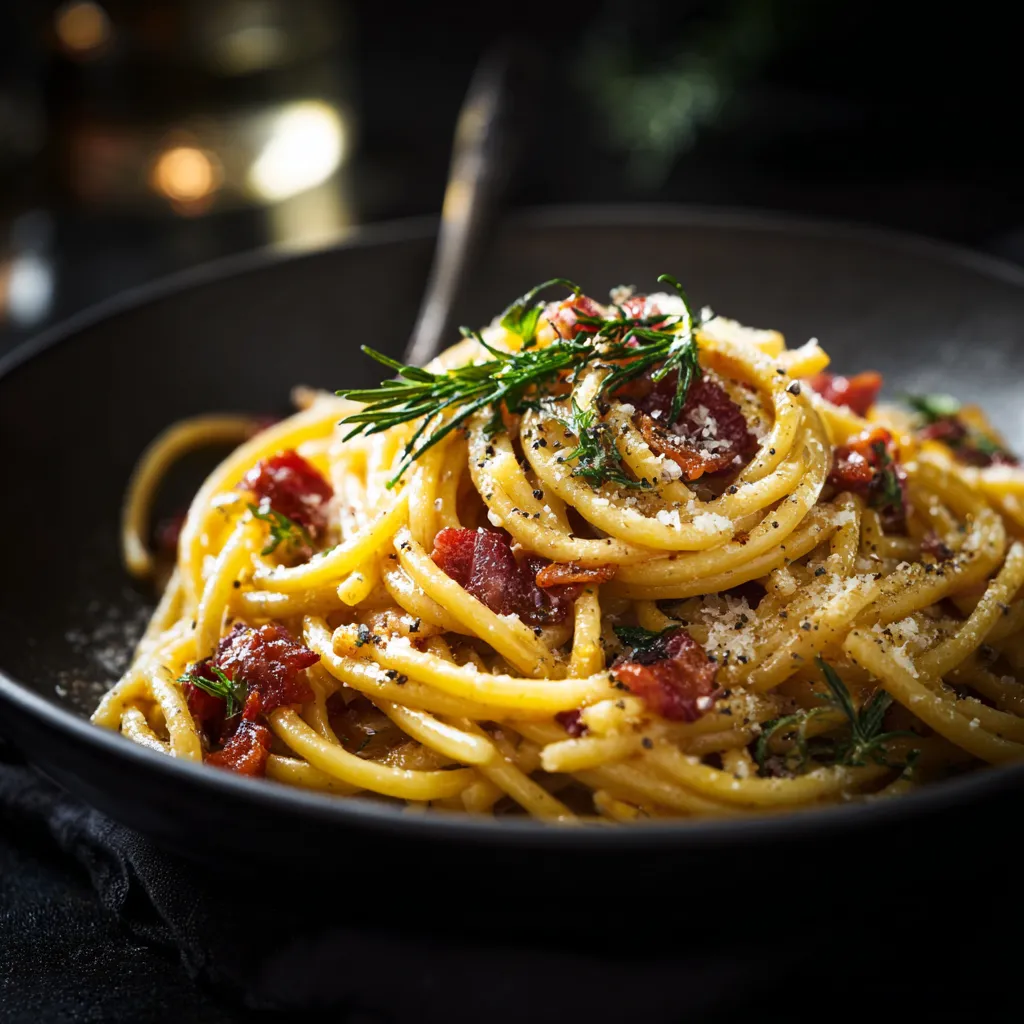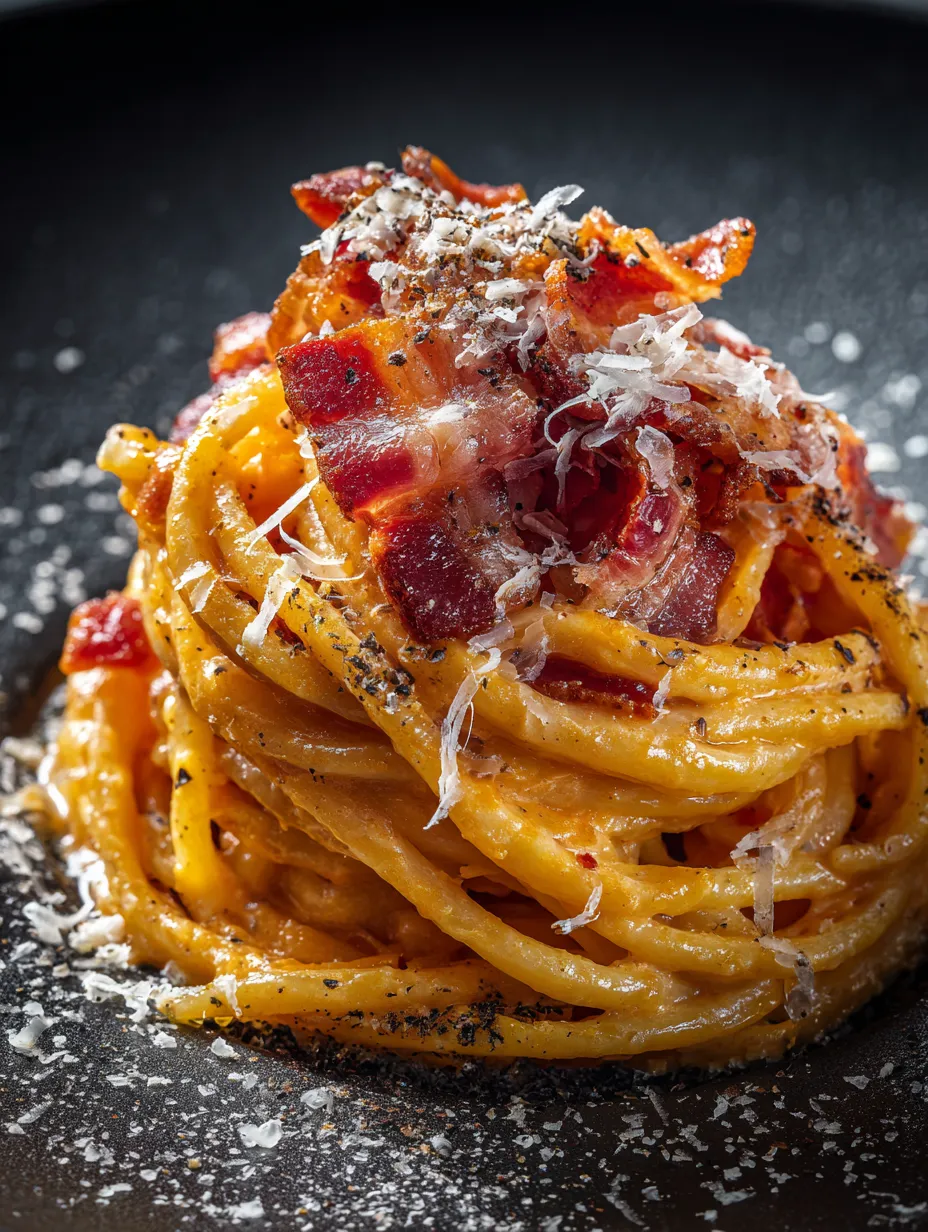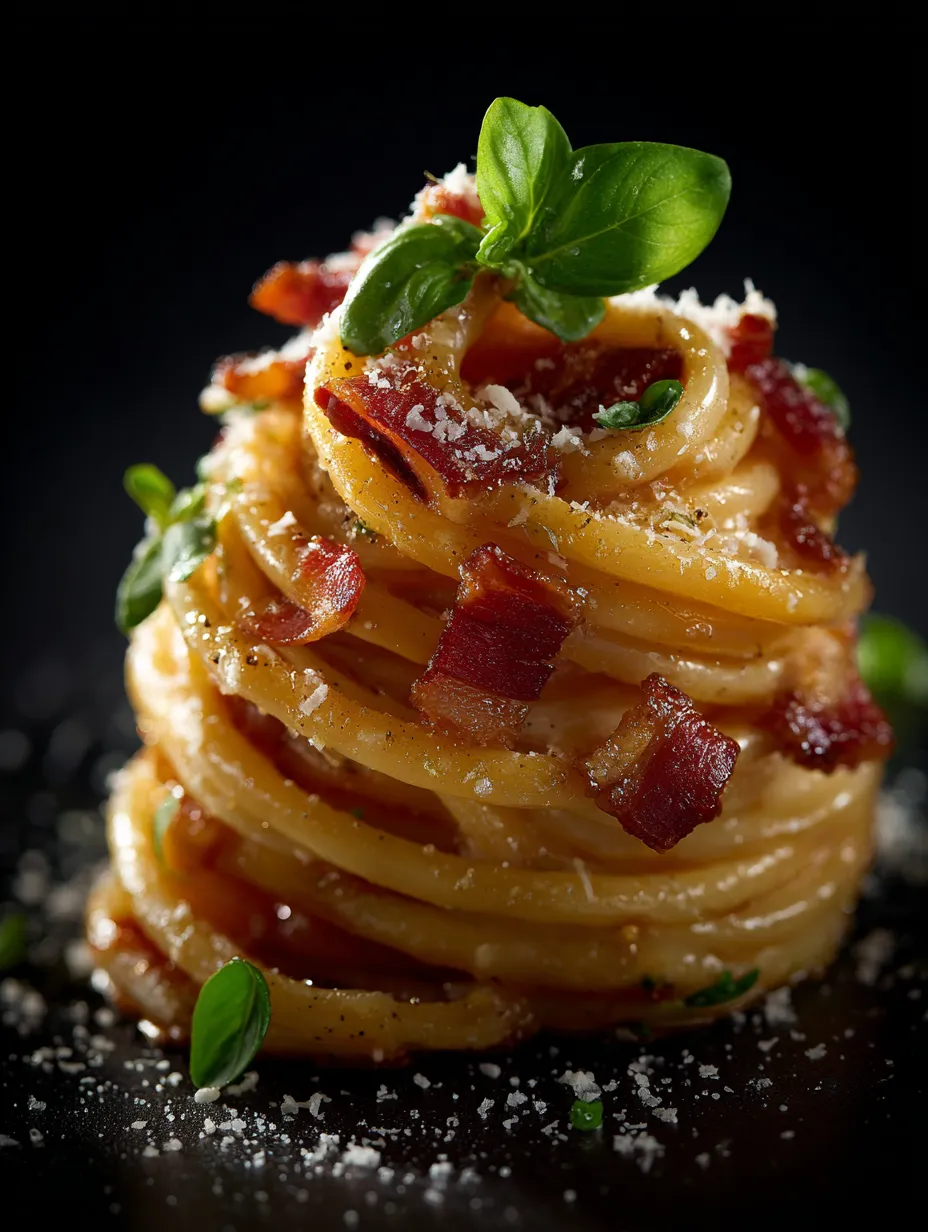 Save
Save
Pasta alla Gricia is centuries old and remains one of Rome’s simplest yet most seductive pasta dishes. Salty guanciale mingles with nutty pecorino in a glossy sauce that perfectly clings to spaghetti or tonnarelli. If you love classic Italian cooking that honors just a handful of ingredients, this recipe belongs in your regular rotation.
The first time I made this for my friends they could not believe how flavorful it was given the short ingredient list Every time I make it now I am reminded that sometimes the best cooking is the simplest
Ingredients
- Black pepper: You want freshly cracked for the brightest flavor Choose whole peppercorns and grind them medium coarse for best results
- Pecorino Romano cheese: Semi aged is best for rich creaminess and plenty of tang Always buy a wedge and grate it yourself for top quality
- Guanciale: The cured pork cheek is what gives Gricia its soul Look for firm pieces with a balance of fat and lean Ask your butcher for help if you have never bought it before
- White wine: A splash picks up all the browned bits and deepens flavor Choose a dry wine that you also enjoy drinking
- Spaghetti or tonnarelli: Both deliver just the right amount of chew Choose dried pasta and check the cooking times on the package for accuracy
Step-by-Step Instructions
- Toast the Black Pepper
- Place the freshly cracked pepper in a dry skillet over low heat Warm gently until fragrant about one minute This step releases the oils for maximum flavor Set aside right away to avoid burning
- Render the Guanciale
- Cut the guanciale into thick matchsticks Fry slowly over medium low heat in a dry pan letting the fat break down and turn translucent Raise the heat just briefly to brown and crisp the edges capturing depth and crunch
- Partially Cook the Pasta
- Bring a large pot of salted water to a boil Add the pasta and cook it for three quarters of the package’s recommended al dente time This means you will finish cooking the pasta in the sauce later for perfect absorption
- De Glaze the Pan
- When the guanciale is golden and crisp pour in the white wine Scrape the bottom of the pan with a spoon to loosen any browned bits Stir so that all the rich fat dissolves into the sauce base
- Combine Pasta and Guanciale
- Drain the partially cooked pasta then immediately add it to the hot guanciale pan Add a couple ladles of hot pasta water to keep things loose Mix in the toasted pepper and cook the pasta gently until just al dente adding more water as needed
- Prepare the Cheese Sauce
- Place finely grated Pecorino Romano in a bowl While stirring drizzle in one ladle of hot pasta water Beat the mixture until it becomes a smooth creamy paste taking care not to let it clump
- Finish the Dish
- Take the pan off the heat and add the cheese paste directly to the pasta Use tongs to mix vigorously making sure every piece is luxuriously coated Serve at once with extra cheese if you like
 Save
Save
Guanciale is my favorite part of this dish The smell of it rendering always fills my whole kitchen and instantly reminds me of long family Sunday lunches When relatives come over even from out of town it is always the first pasta I make
Storage Tips
Pasta alla Gricia is at its best right after cooking but it does keep alright if you end up with leftovers Store tightly covered in the fridge for up to two days When reheating add a splash of water and warm gently over low heat stirring constantly to bring back creaminess
Ingredient Substitutions
If you cannot find guanciale a good quality Italian pancetta is a reasonable swap but try to avoid using regular bacon as it brings smoky notes not typical of Roman cuisine For dairy free needs nutritional yeast will not capture the real essence but it can offer some of that umami if you must adapt
Serving Suggestions
I love to offer this pasta as a main meal alongside a crisp bitter green salad and maybe a simple tomato salad with fresh basil For a true Roman spread pair with roasted vegetables and a bottle of Italian white wine like Frascati
 Save
Save
A Bit of History
Pasta alla Gricia is often called the ancestor of Amatriciana and Carbonara Dating back to ancient Roman shepherds it evolved from the ingredients they could easily carry through the hills The humble combination of dry cheese cured meat and pasta lives on in every Roman trattoria today
Recipe FAQs
- → What type of cheese is best for Pasta alla Gricia?
Semi-aged pecorino romano cheese is traditional, providing a sharp, salty flavor that defines the dish. Finely grate the cheese for smooth melting.
- → Can I substitute pancetta for guanciale?
Pancetta can be used if guanciale isn’t available, though guanciale offers a richer, more authentic taste and texture.
- → Why is freshly ground black pepper important?
Freshly ground black pepper releases vibrant aroma and flavor. Toasting it briefly intensifies its character in the final dish.
- → What pasta shapes work best?
Spaghetti and tonnarelli are commonly used, as their shapes hold the creamy, peppery sauce well.
- → How do I achieve a creamy sauce without clumping?
Mix grated pecorino with hot pasta water to create a smooth paste before adding it to the hot pasta so the sauce emulsifies properly.
- → Do I need to add oil when frying guanciale?
No, guanciale releases enough fat as it cooks, naturally providing the oil needed for the dish.
